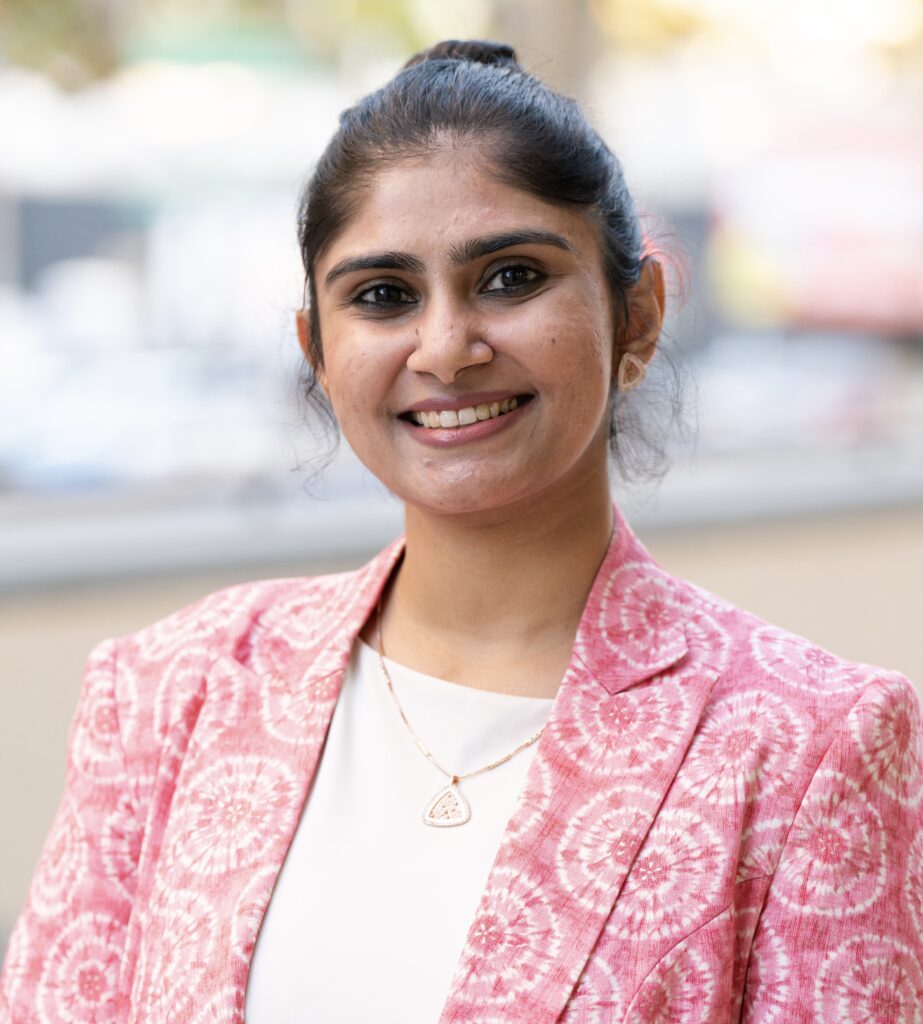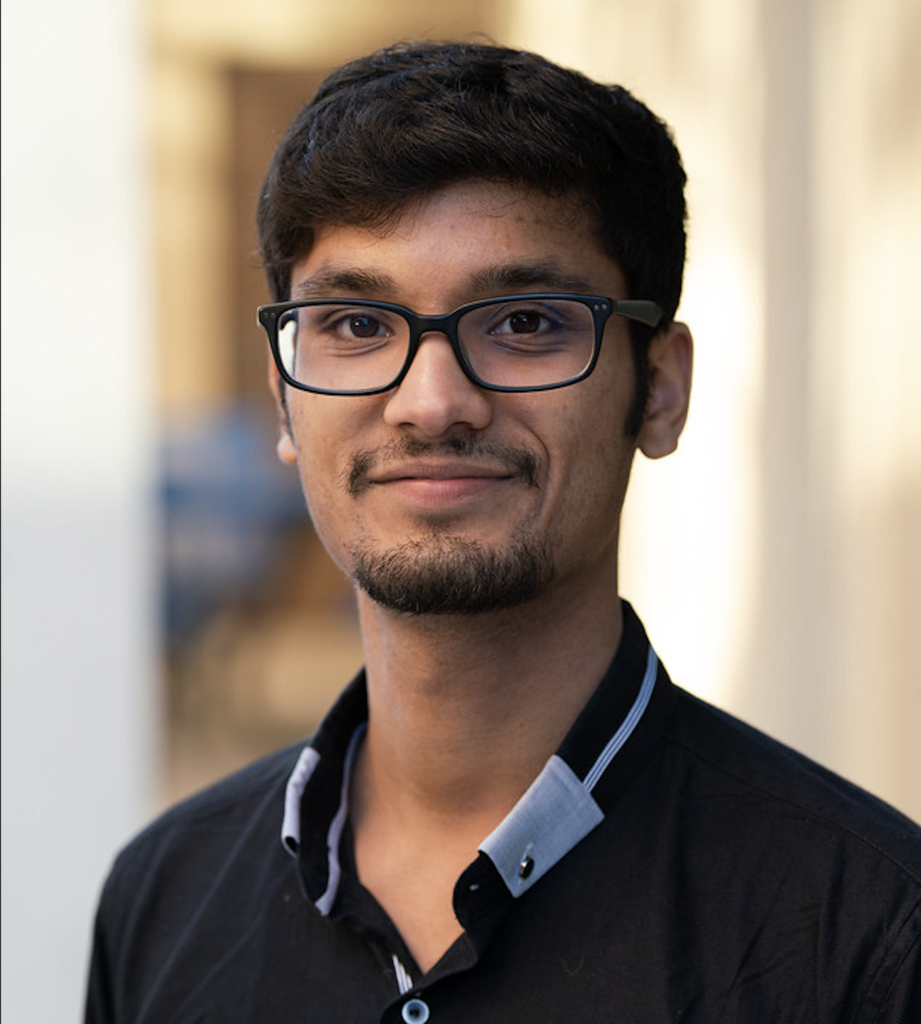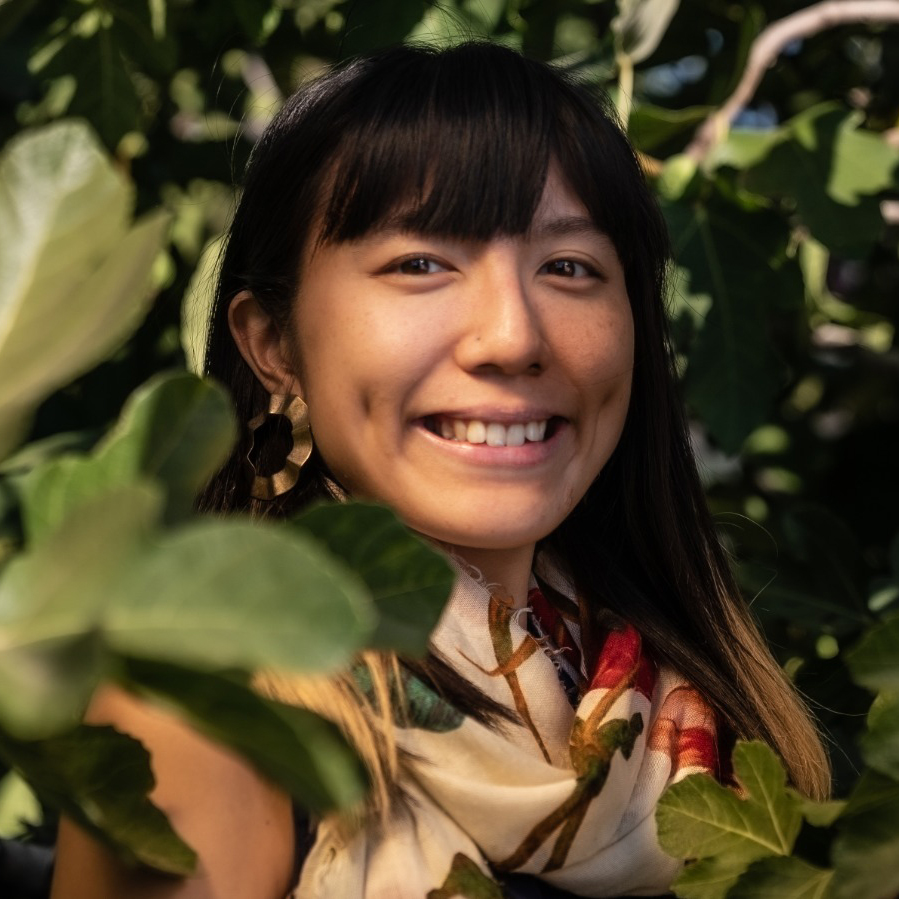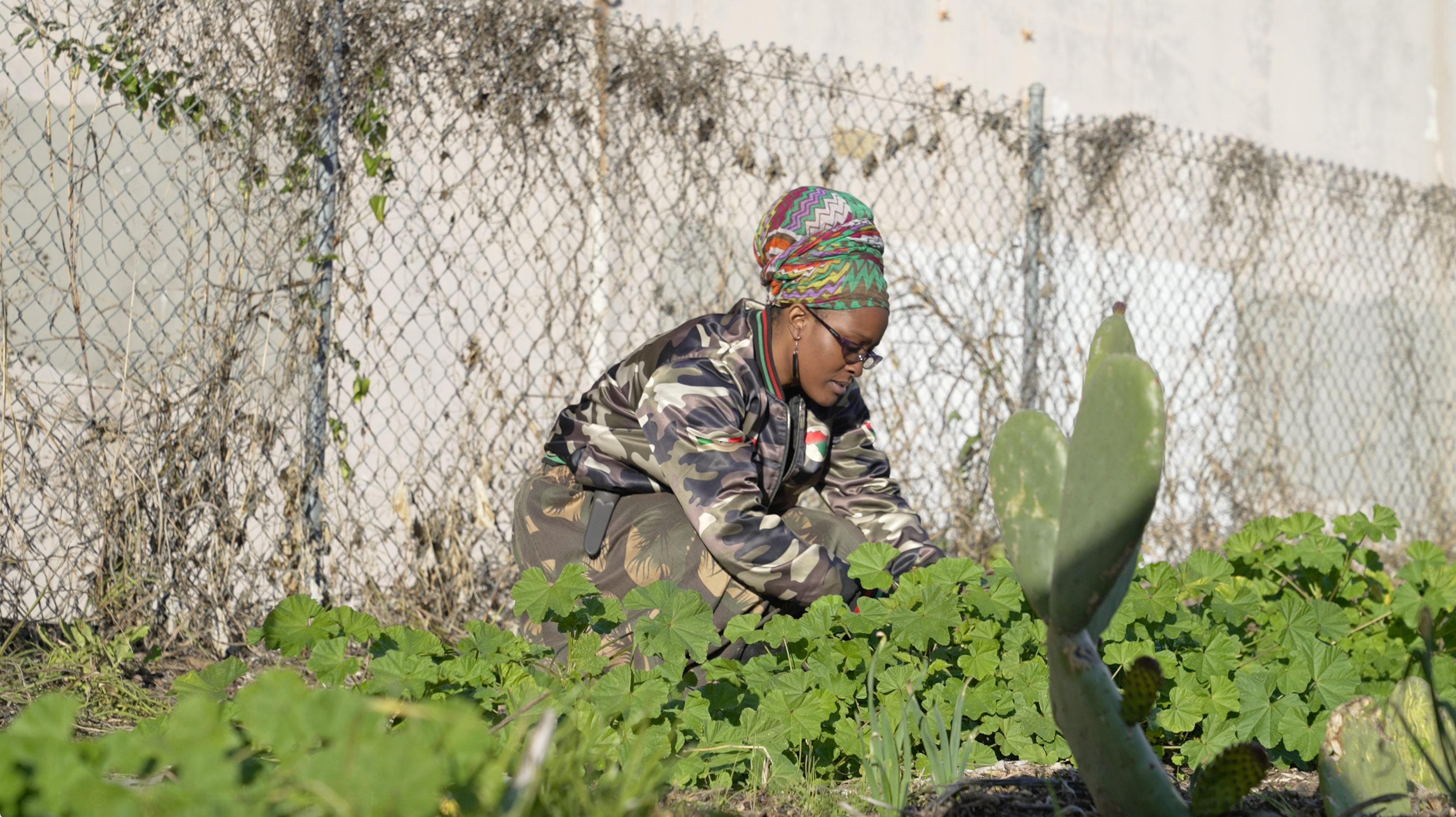From Soil to Soul
Arty Mangan | Published: February 19, 2025 Food and FarmingSocial Justice Article
From Soil to Soul: Young Filmmakers Explore the Local Food Sovereignty Movement
Through the powerful stories of Black, Indigenous, and People of Color (BIPOC) farmers, regenerative practitioners, food activists, and thought leaders, the film series From Soil to Soul charts a path toward food sovereignty — a future where communities reclaim their right to control their local food systems. And by doing so, heal themselves and their communities. The three creators of this film series, a geospatial data scientist, an expert in sustainability and regenerative strategies, and a multimedia artist and filmmaker, share what they have learned in the process.
Ankur Shah uses satellite data to assess climate hazards and environmental issues, and is the Director of Operations at Mycelium, where he has designed sustainable food systems.
Jahnavi Mange has worked with grassroots organizations, local governments and global corporations to drive equity and environmental impact. Margaret To’s climate activism led her to start Studio SAKA, dedicated to social impact and climate education.
Arty Mangan of Bioneers interviewed Ankur, Jahnavi, and Margaret.
ARTY MANGAN: In the process of making this project, did you learn things that you didn’t know about how people are taking control of their food system? And if you did, how did that reshape your vision of what you were trying to accomplish?

JAHNAVI MANGE: Around the time we started doing From Soil to Soul, I studied permaculture from David Shaw at Santa Cruz Permaculture. There I met a lot of people who were into ecological farming, or into building nurseries, or people who just wanted to learn about what goes into building a relationship with land, and growing your own food, and how the systems work. It was very eye-opening to get my feet on the ground, in the sand or mud, and to understand firsthand what’s happening. It helped me get a deeper appreciation for the challenges the folks we interviewed in L.A. and the Bay Area who are growing food are facing.

ANKUR SHAH: We’ve heard tech solutions that claim there is a single silver bullet to solve many problems, or they try to look for global food system solutions. But by interviewing people in community gardens and urban farms, we’ve found the answers to food system problems can vary by region and culture, and they need to be different. Different people in different parts of the world will have different solutions for what a food-just community and food-sovereignty community would look like. So we try to carve that out and pay attention to not aggregating solutions and to not look for a single answer to solve complex food systems issues. It’s not the way we’re approaching it. We want to be very careful about cultural, regional, and social nuances.

MARGARET TO: Echoing what Ankur said, there’s no one silver bullet. By interviewing these people, we got to know them as a person with an individual personality. Through this type of storytelling, we want our audience to also feel that they are connected with them; it’s not someone else’s issue, it’s actually all of our issue.
ARTY: Why is it important to tell the stories of BIPOC (Black, Indigenous, and People of Color) people?
JAHNAVI: In the present times we are in, Indigenous wisdom is so important. How do we use Indigenous wisdom as a mindset in order to improve our current systems? And BIPOC communities are not given the kind of platform they deserve. Those communities and individuals face even greater challenges than other people.
With our platform, we can create some equity by giving those youth and changemakers the voice and an audience to see what really goes on, and how those folks are championing different food sovereignty initiatives in their communities. And hopefully inspire our viewers also to participate and to take initiatives.
ANKUR: In the past couple hundred years, food systems have changed dramatically, partially or in some cases fully due to colonialism. Islands which were food sovereign before, like Puerto Rico, Hawaii, and even Alaska, are no longer food sovereign. They rely mostly on U.S. food imports because of the breakdown of culture, which has led to the breakdown of food systems that were culturally appropriate and regionally sovereign. What’s been lost is the traditional knowledge of food systems, food sovereignty, food justice, and what foods to eat by region. We want to focus more on those kinds of solutions because in past decades the rise of monoculture, large-scale farming, pesticide and herbicide use, are weakening soil health. And that has led to the problems of the modern food system and health issues. So, we want to highlight regional, traditional and cultural solutions, and hence the focus on BIPOC, because the normalized, patriarchal voices have led us down the path we are on now.
ARTY: I’ve worked with Indigenous farmers and also with Black farmers, and sometimes I feel like the term BIPOC is too general. There are differences in perspectives, differences in experience. What’s the commonality that you have found among various BIPOC folks when you did this project?
JAHNAVI: As Ankur said, one commonality is being connected to the culture and the native wisdom. In Indigenous cultures, one common piece is that they have been following nature’s guidance. They are connected to how their ancestors ate and how they treated the soil and the land.
When you talk about different BIPOC cultures, whether they’re Pacific Islanders, or Asian cultures, or African cultures, there’s a system which has developed in a way that would attend to that particular bioregion. Through generations, people have been conscious about following that particular system and not generalizing it, because one solution doesn’t fit all.
ANKUR: One thing I can say from our experience is we found that Black and Indigenous farmers and stewards that we interviewed had more of a communal mindset when it comes to taking care of the community, rather than individualistic mindsets. We didn’t hear very much: “This is my farm,” or “my food system,” or “taking care of me.” Rather, we saw community gardens being built to take care of the health of the children living there, for the people living there. For example, a really great person we interviewed, who was also at Bioneers, is an Indigenous woman from Alaska. Deenaalee Hodgdon, is working on salmon food sovereignty. They are working with the community and native stewards, and it’s more communal driven. They’re creating a collective called the Smokehouse Collective, and it’s really inspiring to see. It’s not at all individualistic. We see a lot of people, especially in the prepper community, taking the “my farm, my land, my food,” “my prep” kind of mindset, and that is not what we saw in BIPOC communities. We’re seeing a very communal mindset to take care of people around them, and I think that’s what we need. We’re trying to highlight community-driven solutions.
JAHNAVI: We also saw that many are open to collaborations, even between the different cultures and communities. They are very much open to collaborations and continued learning rather than being siloed. That is something which we really want to address in our docuseries as well, the interconnected systems and collaborations, and how that would help us create a better future together.
ARTY: One urban farmer that you feature is Imani Diggs from Southern California. He healed his obesity by changing his lifestyle, and by doing so, he found his mission in life and is now helping empower others to heal themselves. This is a classic example of from the wound emanates the gift. His personal healing has inspired him to help others. Can you elaborate on how you see that, and did you see that in some of the other folks that you met?
ANKUR: There is an example which is not in the movie yet, but will be in our series at some point. We interviewed Miguel Villarreal, the interim director of the national Farm-to-School Network. He is bringing locally grown, healthy meals to schools to reduce child health issues such as child obesity by increasing child nutrition. His health was affected by a poor diet in school as a kid. I live in Alabama; I’ve seen kids at schools eating junk food for lunch.
What Miguel is doing with his team is incredible. He’s connecting local food supply chains and local farmers to procure meals for schools. In the process he is building community around food, including parents, children, farmers, and teachers. He is getting everyone on the same page regarding child nutrition and child health. It’s obviously in the best interests of the parents for their kids to be healthy.
Teachers have seen grades improve due to children eating healthy foods. The farmers benefit by having a local buyer of locally grown food. He’s creating a win-win-win solution in communities across the country, and it’s, for the most part, a bipartisan agreement that child health matters.
JAHNAVI: Talia Dotson, whom we have featured in the Palate of the Soul, her story starts from her personal journey in healing. She experienced a lot of health issues, and initially she didn’t realize that it had to do with the food she was eating – lots of processed foods. She started eating more fresh food, especially organically grown food, and became more connected to nature that way. That was her inspiration to help people understand what conscious consumption is and how to build a relationship with food.
ANKUR: One more example that comes to mind, and this is not in the film yet either, but we have a full two-hour interview with Deenaalee Hodgdon whose health had suffered from eating processed foods like processed greens in Alaska that were imported and not locally grown. That led them to pursue ancestral roots and knowledge of the traditional foods in Alaska that their people used to eat. That’s the journey which ultimately led Deenaalee to pursue salmon food sovereignty and create the Smokehouse Collective. They also work on other issues regarding commercial fishing in their region. That’s an example of how a journey of healing can lead to exploration of finding traditional foods, traditional roots, ancestral knowledge, and then bringing that back to the community in a beautiful way.
JAHNAVI: We traveled to Hawaii, and we learned about how systematically Indigenous traditions and culture were prohibited. They were not allowed to learn their native Hawaiian language in the schools. And were discouraged from growing food in their traditional agricultural manner. The island now imports 80 percent of their food. But there’s a revolution happening in Hawaii led by the people who still hold the knowledge of the ancestral Hawaiian food systems, agriculture, and languages. They are teaching and empowering the youth in these initiatives, and teaching them about Native Hawaiian culture.
ARTY: You mentioned Talia Dotson. In the film, she said convenience and fast are a problem and are the opposite of natural processes. She said being alive is hard, and gave the example of a seed struggling to break through its outer coat to get its roots established in the soil. What do we lose with convenience and fast?
JAHNAVI: When you are constantly hustling around, when you are constantly in the fast pace of life, you lose the conscious connections with yourself and with the entire ecosystem around you. To do anything meaningful in life, you need to pause, you need to reconnect–taking time out to connect to your food, being mindful and grateful about it, and sharing a meal with others in your family and community versus being in a hurry while you eat. What you eat, the way you eat, all of that contributes to who you are and the person you are becoming, and it influences society. That’s how I relate to Talia’s words.
MARGARET: The act of making food together is being lost, as we’re always just grabbing fast food.
There’s a part of the interview that didn’t make it to this cut of the Food Justice in L.A. mini episode. Talia talked about going somewhere to eat, and when she tasted the food she felt a kind of sadness. She realized that the cook must be upset. So, the energy of the person making the food goes into the food, and also goes into our body when we eat it. Who are the people making the food, and how your food is being made is important.
ANKUR: I agree, and to some degree I’m also guilty of that. I also think that this fast-paced life has given rise to many health issues, especially microwaving things in plastic containers. We are finding out that our brains and many organs have microplastics, and partially that is to blame on convenience because convenience has led us to this excessive usage of plastics, for beverages, for foods, for every little thing. So convenience, I would say, has given rise to a lot of health issues, which is ultimately sabotaging us. It’s not convenient in the long run, even though it might seem it is in the short run.
JAHNAVI: In India, there are certain seasons where specific kinds of foods are prepared. Growing up there, I have seen how a couple of families come together, especially the women in different families and neighborhoods come together, share food, and create some kind of fermented foods that are going to be eaten a few months later. When you eat that, you’re so grateful and thankful to everyone who prepared it.
At some churches or some temples, food is given to many people. There is a sense of satisfaction because it’s been prepared out of love and the sense of giving, and the sense of belonging. All of that makes a big difference.
ARTY: I read a study some time ago that families that eat at least one meal together most days of the week, the youth of those families, have not only better physical health outcomes but better emotional health outcomes as well.
ANKUR: Growing up, my grandparents always made it a point to make sure at least dinner is a full family meal, meaning everyone sitting in a circle or at least around the table and having a meal together.
ARTY: My next question is for you, Margaret. You work on developing cross-pollination among local communities, Indigenous Peoples, etc., to radically change the current food system. So the question I have is: What is needed to happen for all these efforts that you portray in the film to make an even greater impact?
MARGARET: I think it all starts with conversation. This project started by talking about these issues. We now know who some of the leaders and activists are and have met some of them in person. By making the film, we have been facilitating those kinds of conversations. It takes people from all different backgrounds to solve the problems of the food system. No one group is going to solve them. We all have to come together.
ARTY: Ankur, this is a question for you. You’ve designed sustainable food systems. There’s always a translation from the design stage to the implementation stage. How does grassroots food sovereignty fit into a sustainable food system design?
ANKUR: I think what’s needed is the preservation of local farming and local businesses. And over the past few decades, we’ve seen small communities that used to depend on local farmers, local farm stands and farmers’ markets that now have Walmarts, Costcos and other multinational corporations which they now rely on. That weakens the local economy and money is sucked out of the community. What is needed is local grassroots action to oppose such forces and to preserve and implement actions that enable the local economy and not weaken it.
What’s happening right now is this giant wealth transfer, and it’s been happening for a while, but it’s accelerating out from middle-class citizens and the poor to the rich. And one of the ways this is happening, of course, is the replacement of local businesses and the killing of them by large companies and large food conglomerates and tech companies. So grassroots action could help in collectivizing voices and collectively letting people at the state or city level know we don’t want a giant Walmart or some similar entity.
Preserving food sovereignty means preserving regional food production. And it doesn’t always have to be local. It may not even be local in some parts of the country and the world. But prioritize local at least to the extent that is possible, and culturally and socially appropriate. That’s where I’d say collective action comes into play.
ARTY: That leads me into the question for you, Jahnavi. You’ve worked with grassroots organizations as well as large corporations. Is it possible to build a bridge between grassroots organizations and corporations without big money usurping local food sovereignty?
JAHNAVI: Food sovereignty is about the collective grassroots actions that we see from the local region. But if we want to zoom out and expand it on a broader scale, if there is a corporate company whose mission includes sustainable sourcing and is working with local farmers, then it can work in collaboration. But if we see a corporation who’s just in the mindset of extraction and not collaboration, then that’s a kind of capitalism that works against food sovereignty.
When there is toxic capitalism, we need to empower more grassroots initiatives. But when there is truly a shared vision for a local economy, then it is possible to work in collaboration with larger corporations to empower local systems in order to make a global impact.
There are companies who are starting to understand that and starting to shift their perspectives, but not everyone is there yet. There is a lot of whitewashing and greenwashing happening. So that’s something we really need to be careful about.
